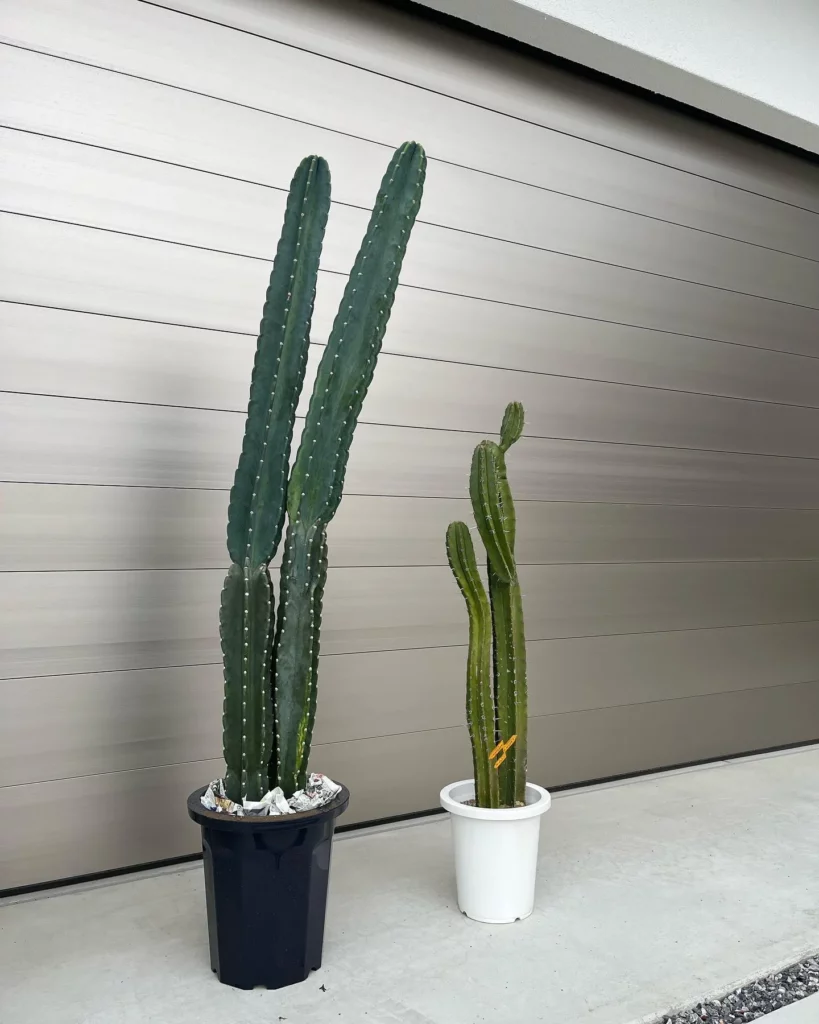The Golden Rat Tail cactus is truly unique in its appearance, making it stand out from other cacti. Its long, coiled stems are adorned with beautiful golden spines, adding to its allure. With a trailing or pendant growth habit, these stems gracefully hang down, creating an eye-catching display. Despite their size, the thorns on the Golden Rat Tail are small, but they contribute to the plant’s overall aesthetic appeal. Growing to a height of 2 to 5 meters, this cactus commands attention and makes a stunning addition to any garden or indoor space.
Appearance of Golden Rat Tail
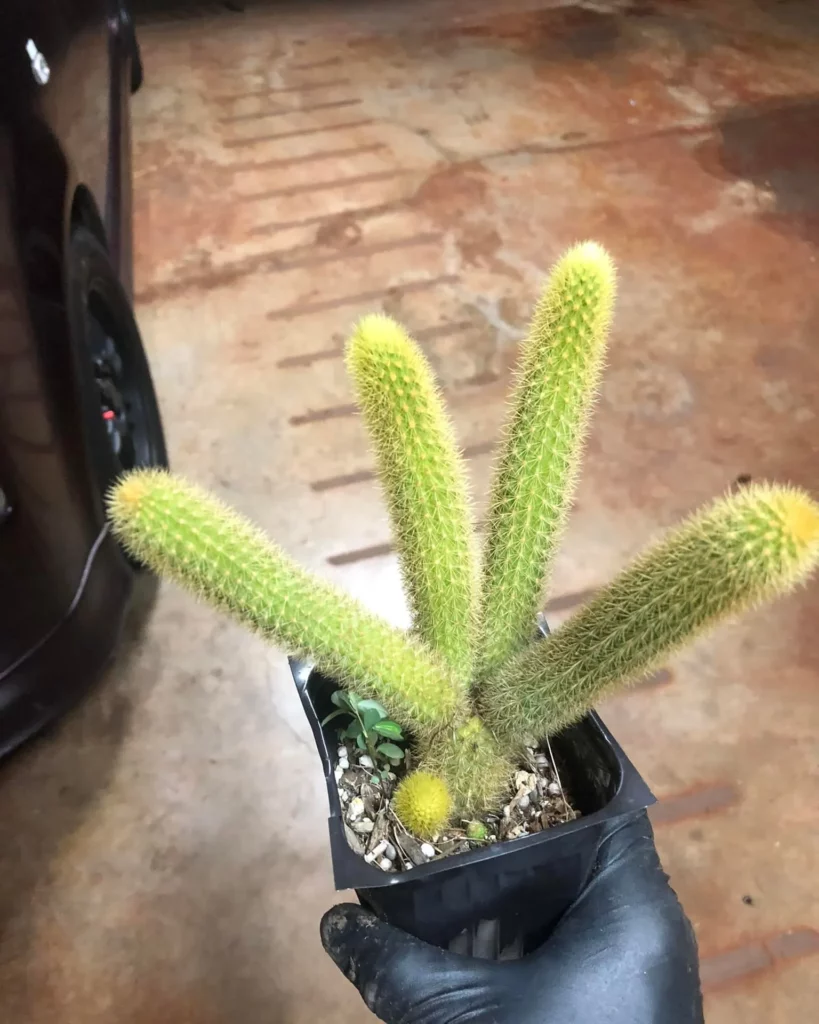
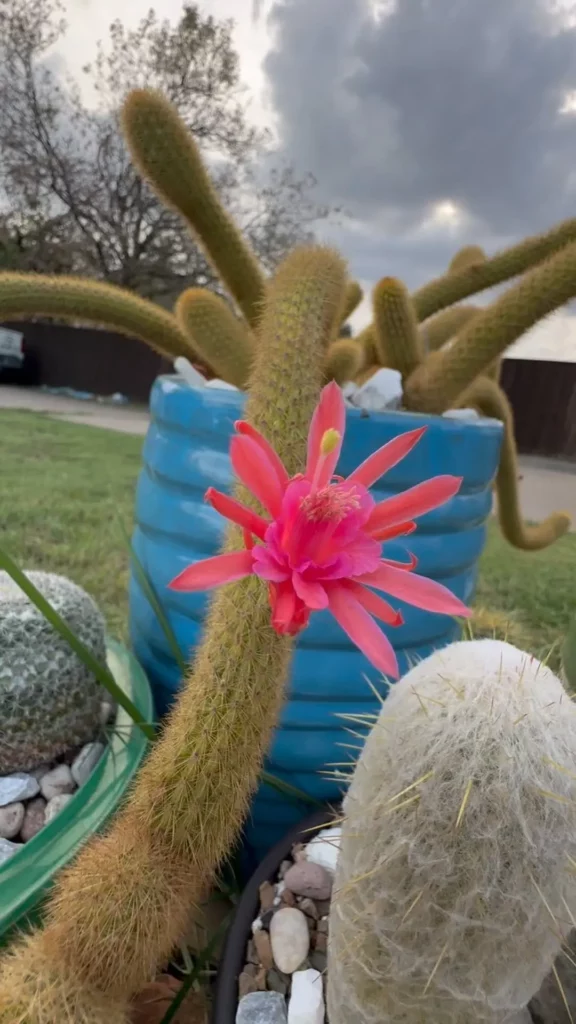
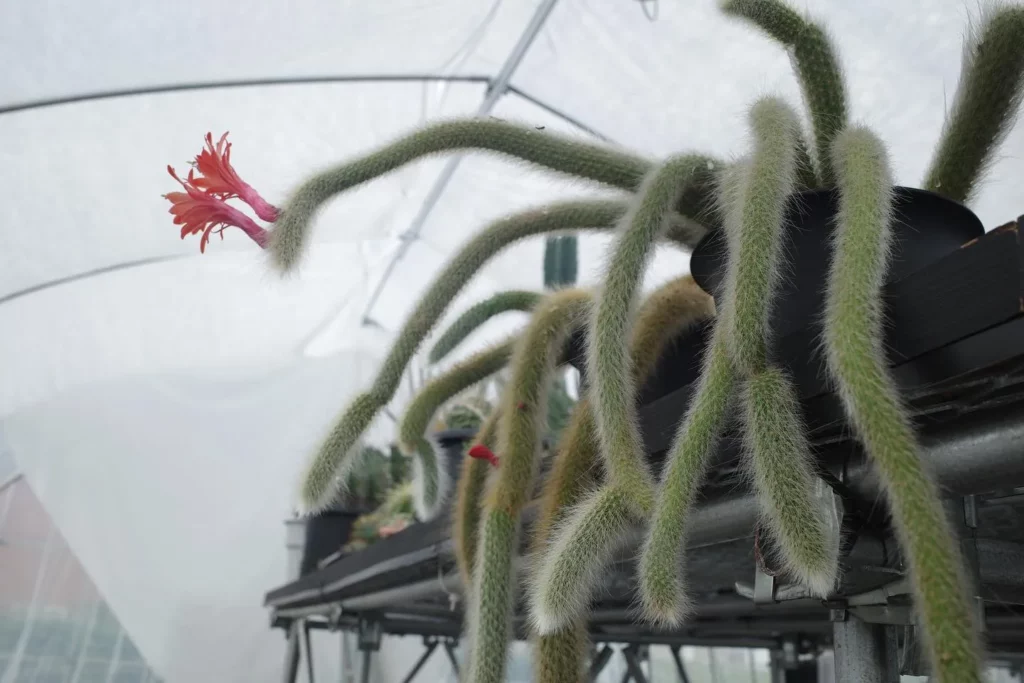
When it comes to flowering, the Golden Rat Tail does not disappoint. When in bloom, it showcases vibrant orange or salmon-pink flowers, providing a burst of color amidst its golden spines and coiled stems. These blooms are a delightful contrast against the backdrop of the cactus and add an extra layer of charm to this remarkable plant.
Light Requirements for Golden Rat Tail
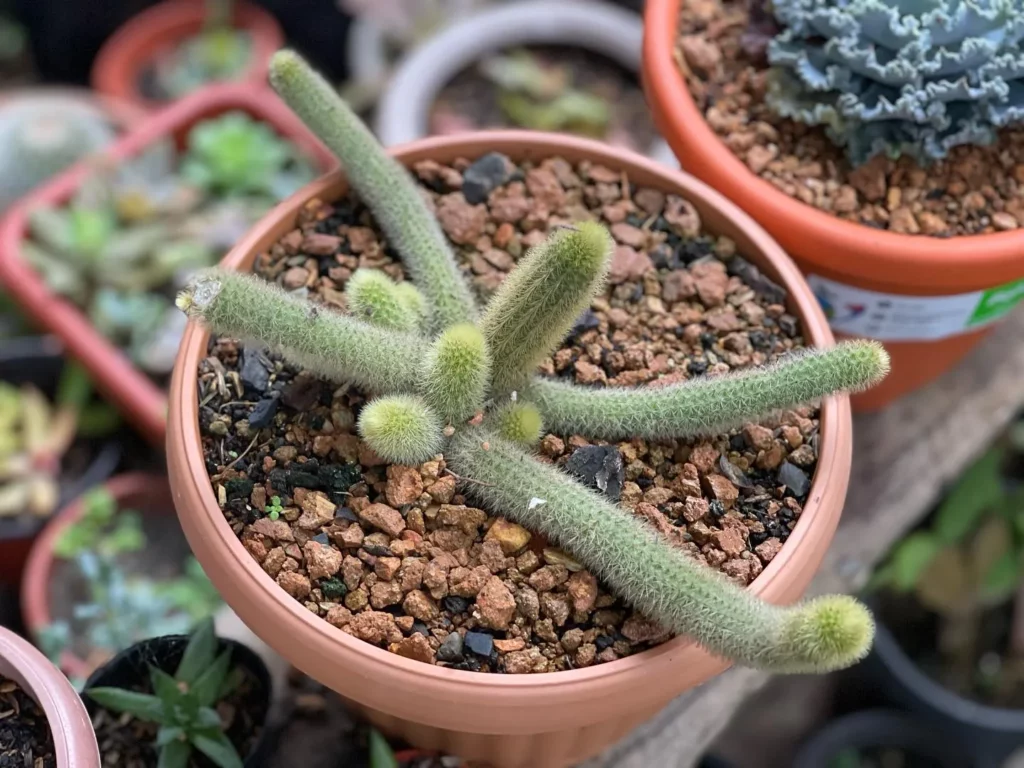
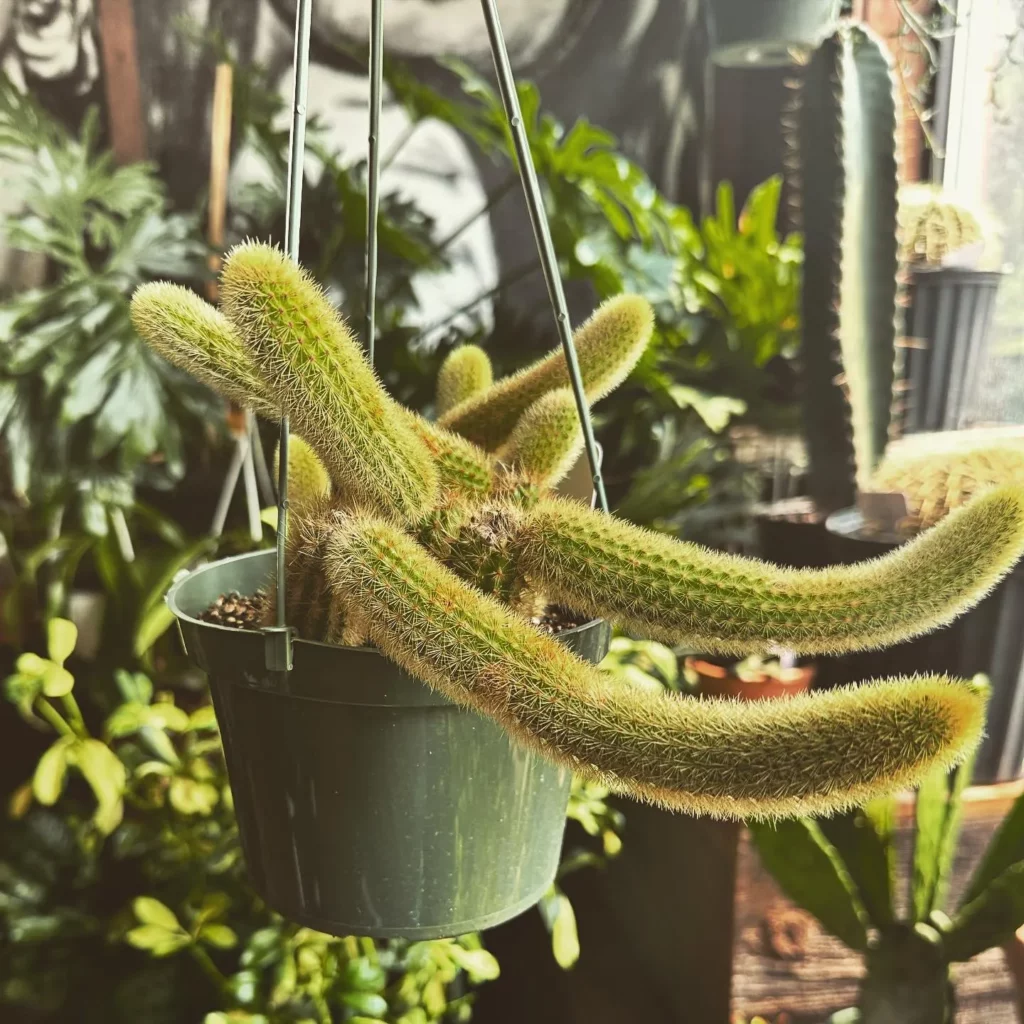
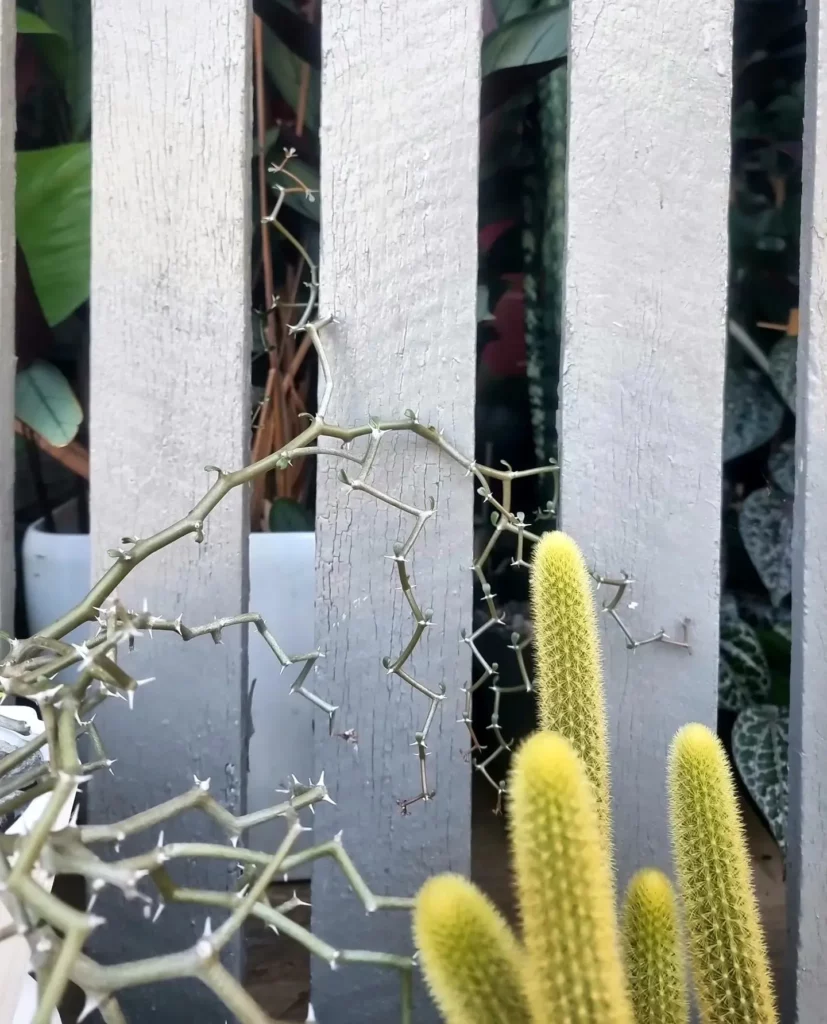
The Golden Rat Tail cactus requires bright, filtered light in order to thrive and grow optimally. While it can tolerate a wide range of light conditions, providing the right amount and quality of light is crucial for its health and appearance. Here are some important points to keep in mind regarding the light requirements of the Golden Rat Tail:
- Bright light: The Golden Rat Tail needs ample light to support its growth. Place the plant in a location where it can receive bright, indirect light for several hours a day. Placing it near a window facing east or west is ideal.
- Filtered light: While the Golden Rat Tail can tolerate some direct sunlight, it is best to provide filtered light. This can be achieved by placing the plant in an area with a sheer curtain or by positioning it under a tree that provides dappled sunlight.
- Partial sun: The Golden Rat Tail thrives in partial sun conditions, which means it benefits from receiving a few hours of direct sunlight in addition to filtered light. However, avoid exposing the plant to full sun as it can lead to sunburn and damage the cactus.
- Light shade: If you are growing the Golden Rat Tail indoors, it is important to provide it with some shade. Placing the plant near a window with sheer curtains or using a sheer curtain to filter the incoming light will help create the ideal light conditions.
Watering Golden Rat Tail
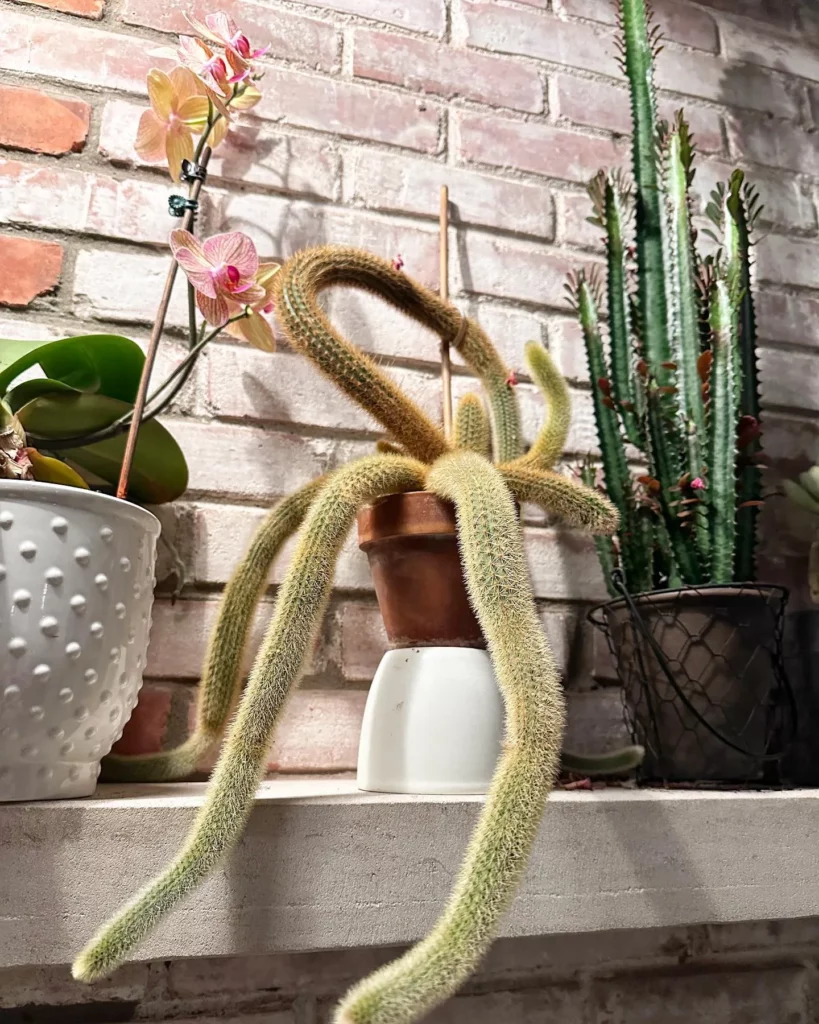
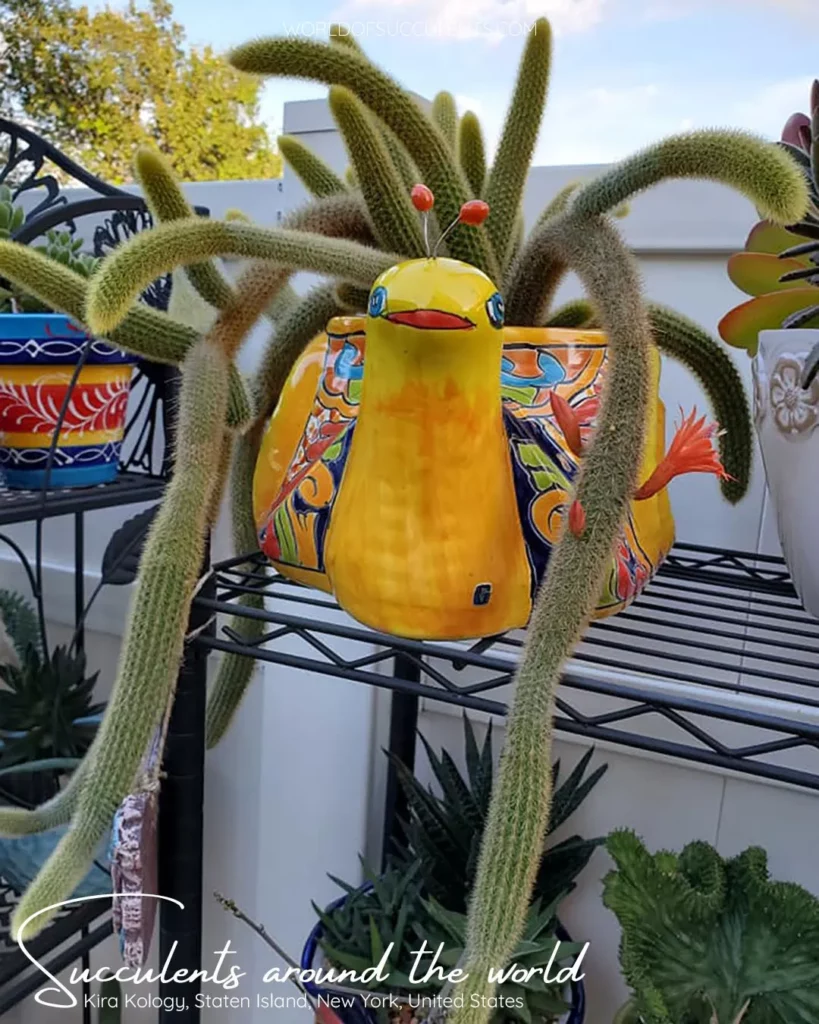
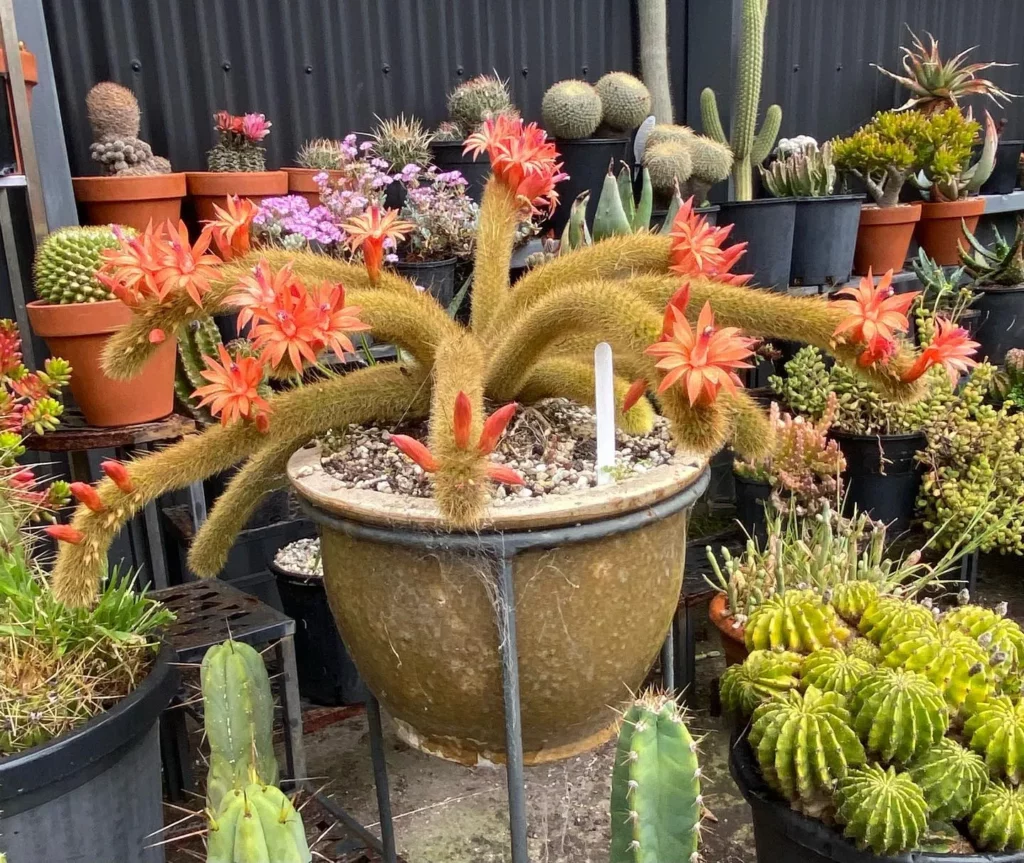
The Golden Rat Tail is a drought-tolerant cactus, making it an excellent choice for those who want a low-maintenance plant. When it comes to watering, you need to strike the right balance to ensure the health and vitality of your Golden Rat Tail.
During the growing season, it is important to water the plant moderately. Wait until the soil becomes dry before giving it a thorough watering. Ensure that the water reaches the roots, and allow the excess water to drain out. This will prevent waterlogging and potential root rot.
A vital aspect of watering the Golden Rat Tail is to let the soil dry out completely between waterings. This is important because the cactus is adapted to survive in arid conditions and can tolerate periods of drought. Allowing the soil to dry out mimics its natural environment and promotes healthy growth.
In the summer months when the weather is sunny, you may need to water more frequently, but remember to always check the soil moisture levels before watering again.
On the other hand, during the winter season, the Golden Rat Tail enters a period of rest. It requires significantly less water during this time. Reduce the frequency and amount of watering, and make sure the soil dries out between waterings. This will help the plant conserve energy and remain healthy throughout the winter.
Fertilizing Golden Rat Tail
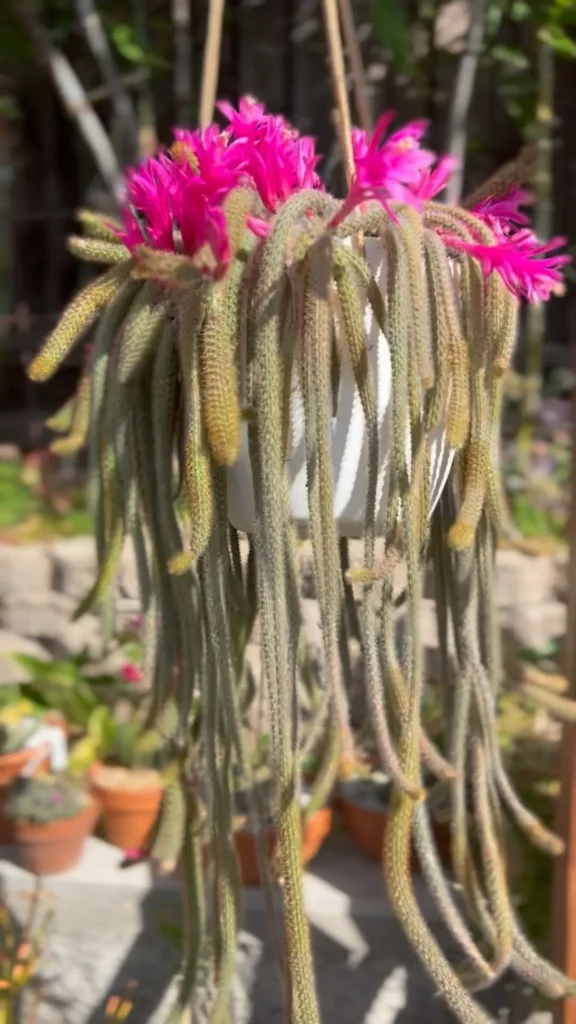
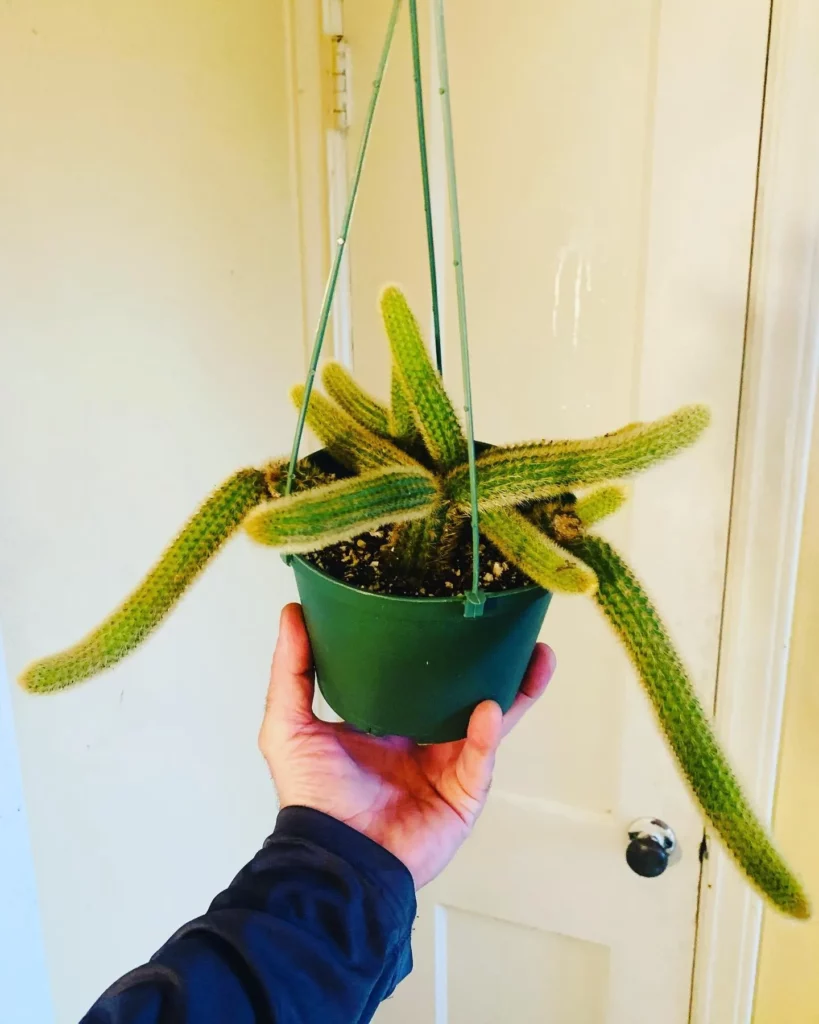
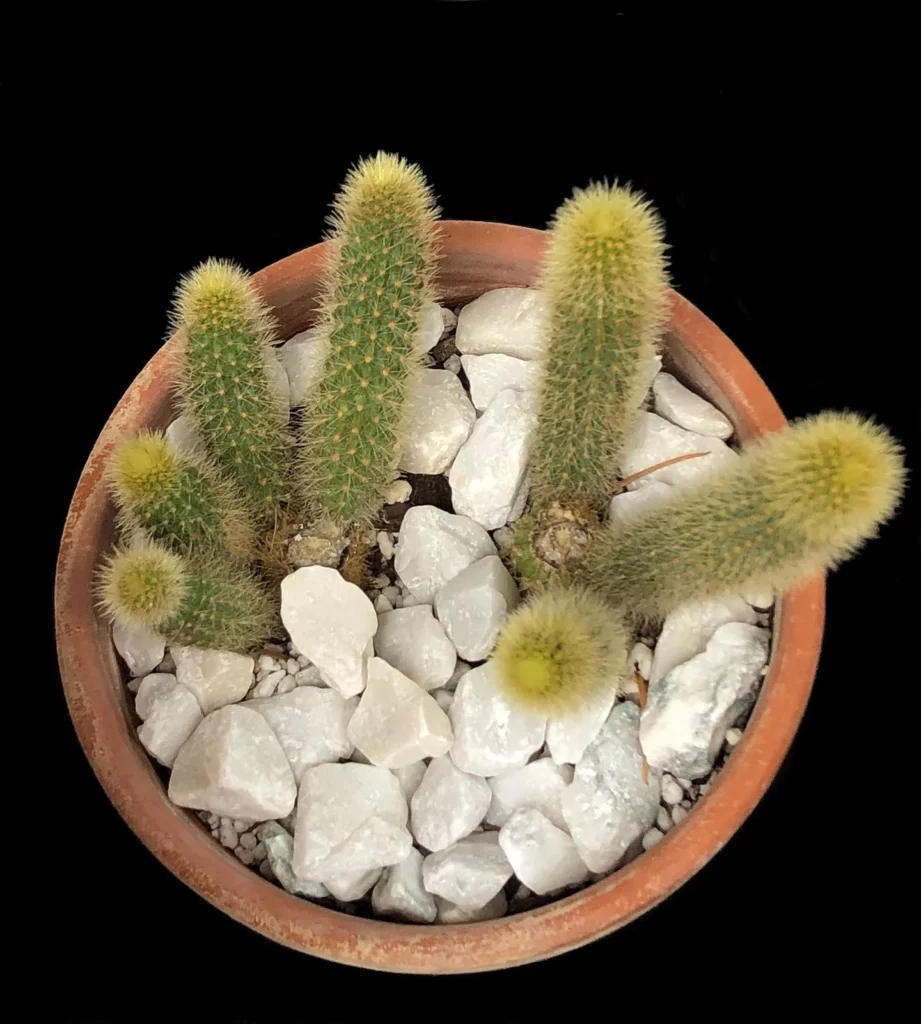
To promote the healthy growth and blooming of your Golden Rat Tail, occasional fertilization is beneficial. During the active growing period, typically in spring and summer, using a high potassium liquid feed can provide the essential nutrients necessary for the plant’s development.
High potassium fertilizers are ideal for cacti and succulents as they help promote strong root growth, enhance flowering, and improve overall plant health. Potassium is an essential nutrient that aids in nutrient absorption, water regulation, and disease resistance.
When fertilizing your Golden Rat Tail, it is crucial to follow the instructions provided on the fertilizer packaging. Over-fertilizing can harm the plant and lead to nutrient burn, so it’s important to apply the fertilizer at the recommended frequency.
As a general guideline, dilute the liquid fertilizer according to the instructions, and apply it to the soil around the base of the plant. Avoid direct contact with the stems and leaves, as this may cause damage.
Avoid fertilizing during the plant’s dormant period, typically in fall and winter. During this time, the Golden Rat Tail enters a rest phase and requires minimal nutrients.
Potting Golden Rat Tail
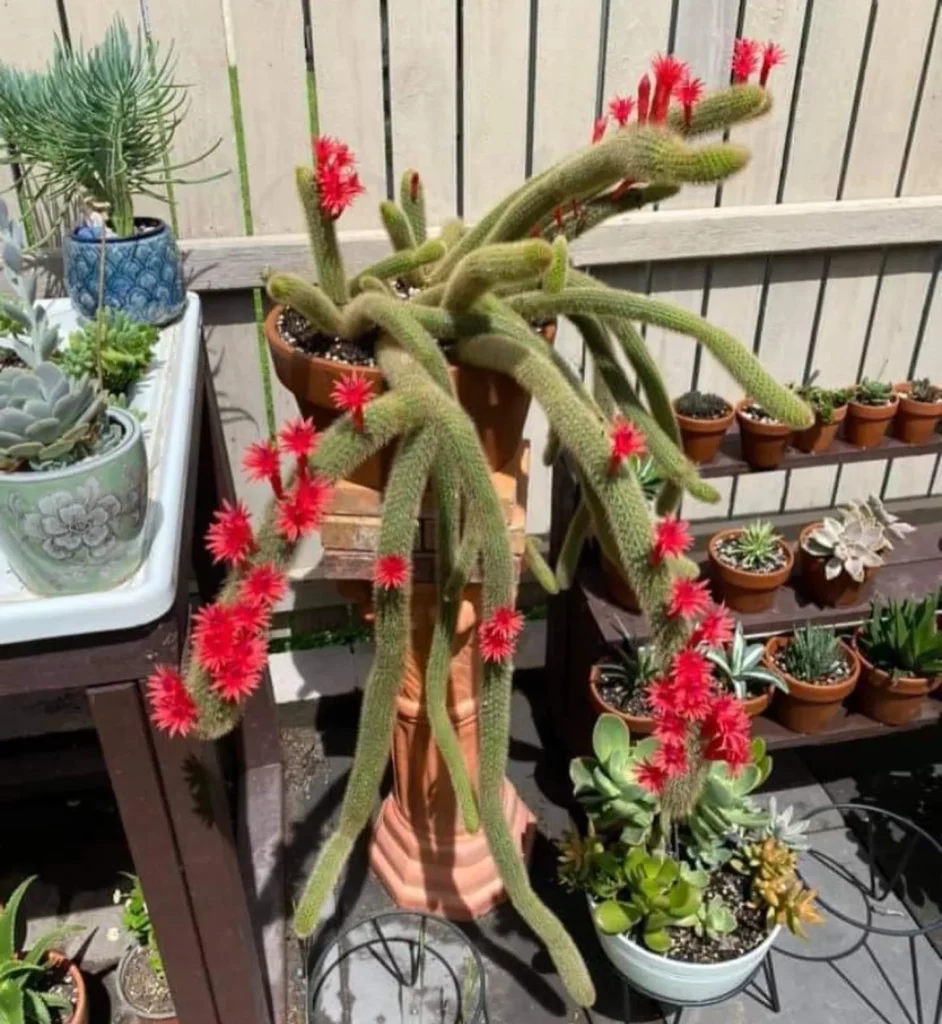
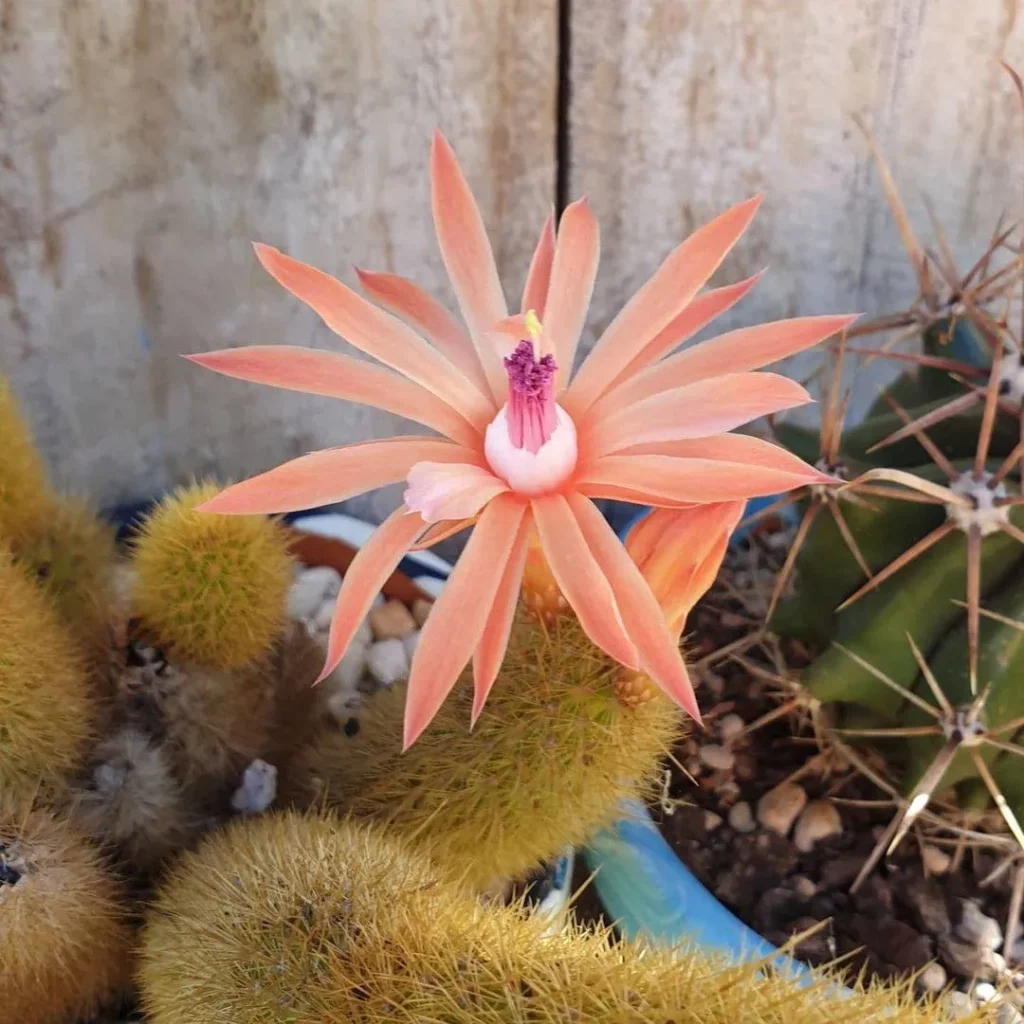
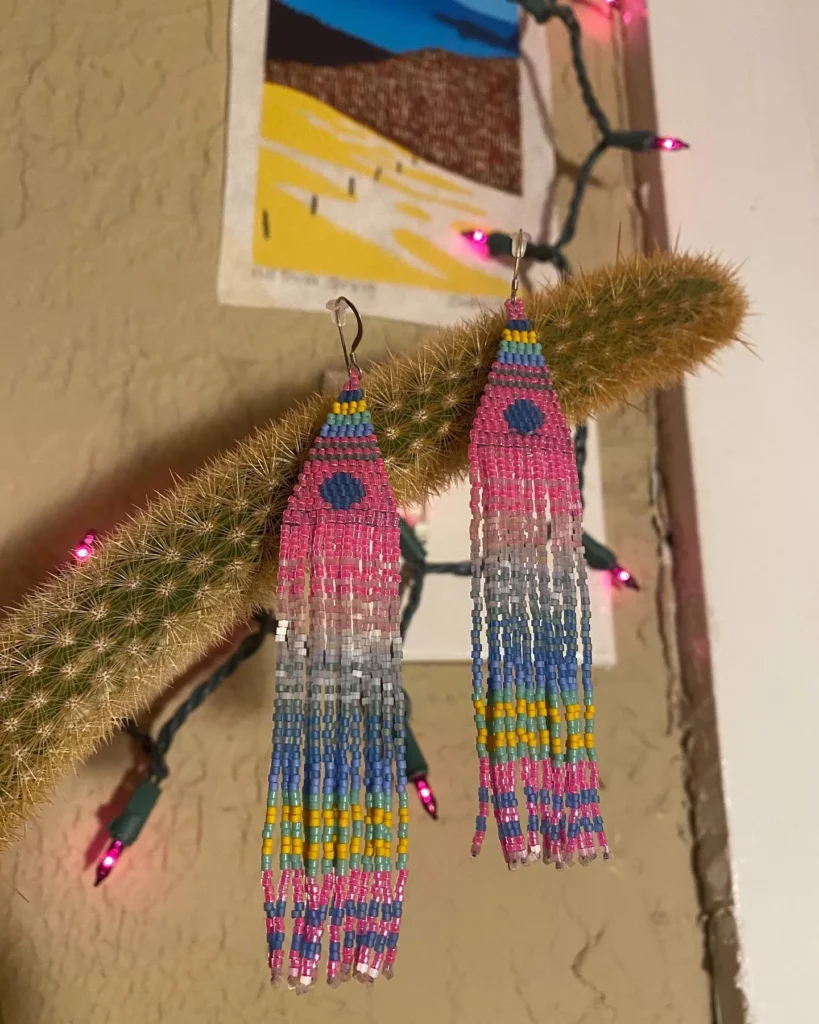
Proper potting is vital for the health and growth of your Golden Rat Tail cactus. To ensure optimal root health, it is essential to use a well-drained cactus mix when potting the plant. This type of soil provides the right balance of moisture and airflow, preventing issues such as root rot.
Repotting should be done every other year or when the plant outgrows its current pot. Keep in mind that the Golden Rat Tail is a rapid grower and needs space for its roots to thrive. However, this doesn’t necessarily mean you need to choose a larger pot each time. Select a pot that allows enough space for the roots without leaving excess room, as overly large pots can hold too much moisture and lead to problems.
When repotting, make sure to provide fresh potting mix that is well-drained. This will allow excess water to drain away and prevent waterlogged soil, which can suffocate the roots. Before transferring the plant to the new pot, gently loosen the roots and remove any damaged or dead ones.
When potting your Golden Rat Tail, remember to:
- Choose a well-drained cactus mix
- Repot every other year or when the plant outgrows its current pot
- Select a pot that provides sufficient space for the roots
- Use fresh potting mix that drains well
- Loosen and trim the roots when repotting
Propagation of Golden Rat Tail
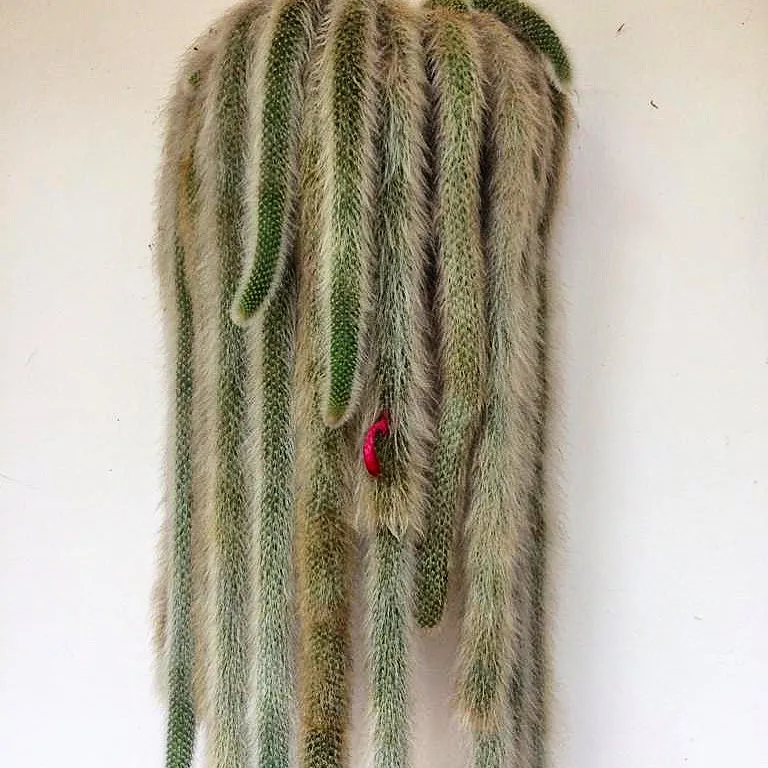
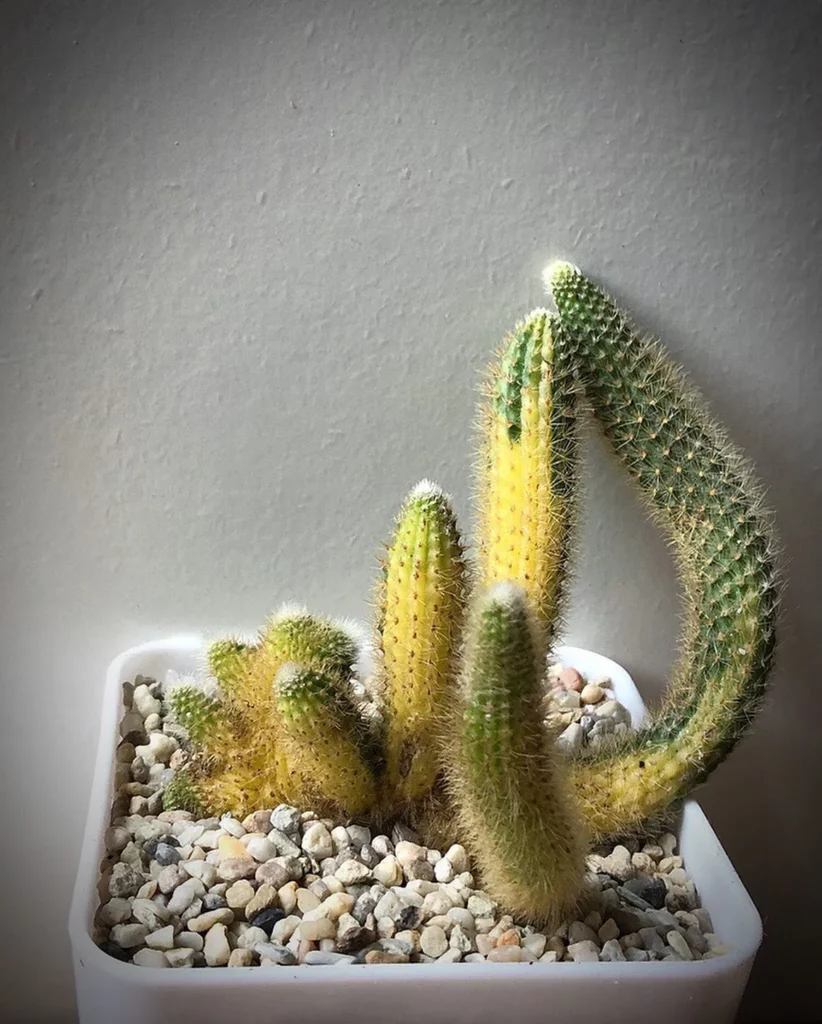
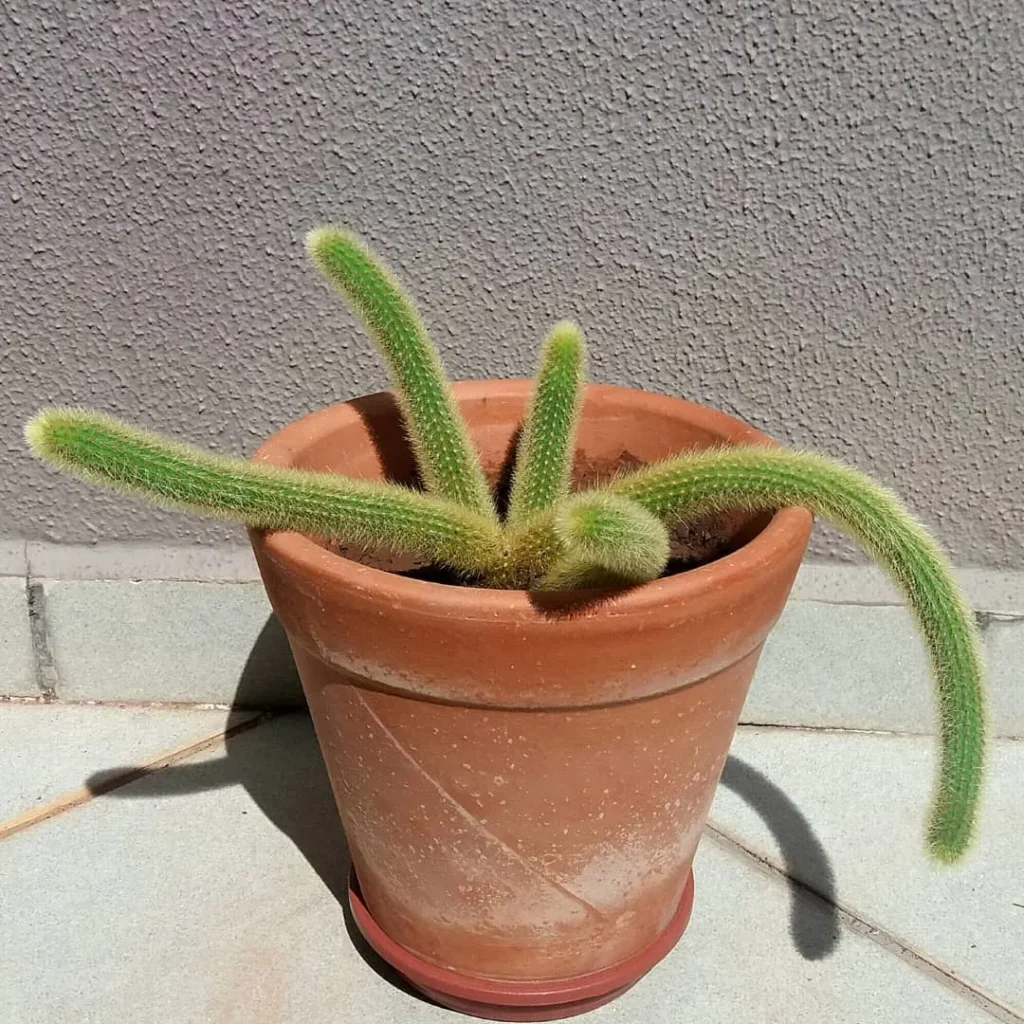
Propagating the Golden Rat Tail is a straightforward process that can be done through cuttings or seeds. Both methods have their advantages and can yield successful results.
If you prefer using cuttings, it is best to take them in the spring or summer when the plant is actively growing. To begin, carefully remove a healthy stem segment, making sure it is at least 4-6 inches long. Allow the cut end of the cutting to callous over for a few days before planting it in fresh cactus soil. The soil should be slightly moist but not excessively wet. Keep the soil lightly moist until the cutting roots, which usually takes a few weeks.
Alternatively, you can propagate the Golden Rat Tail through seeds. Start by surface sowing the seeds on top of well-draining cactus soil. Gently press the seeds onto the soil surface, ensuring good contact. Place the pot or tray in a warm, well-lit area, providing the seeds with indirect sunlight. Maintain a temperature of around 20°C. The seeds will germinate within 14-28 days, and you’ll soon see the tiny seedlings emerging from the soil.
As seedlings dislike strong light and dry conditions, it is crucial to provide them with a suitable environment. Place them in an area with bright but filtered light, such as under shade cloth or indirect sunlight. Keep the soil lightly moist, but be careful not to overwater, as excessive moisture can lead to fungal issues.
Whether you choose cuttings or seeds, propagation allows you to multiply your Golden Rat Tail collection and share the beauty of this unique hanging cactus with others.
Growth and Development of Golden Rat Tail
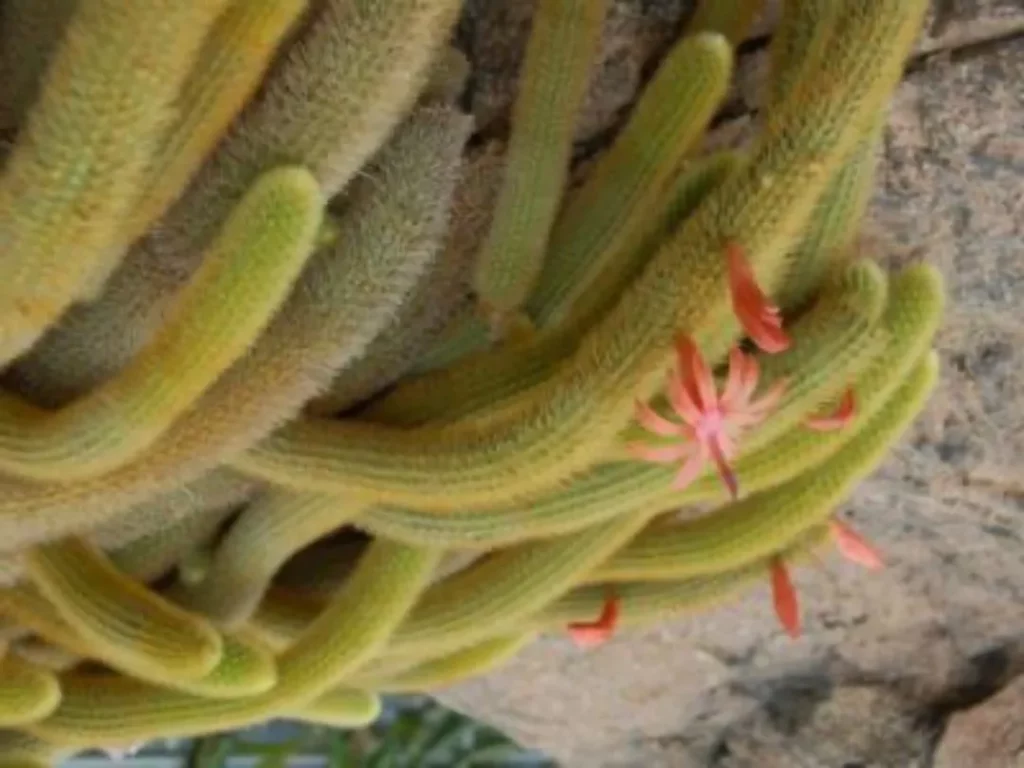
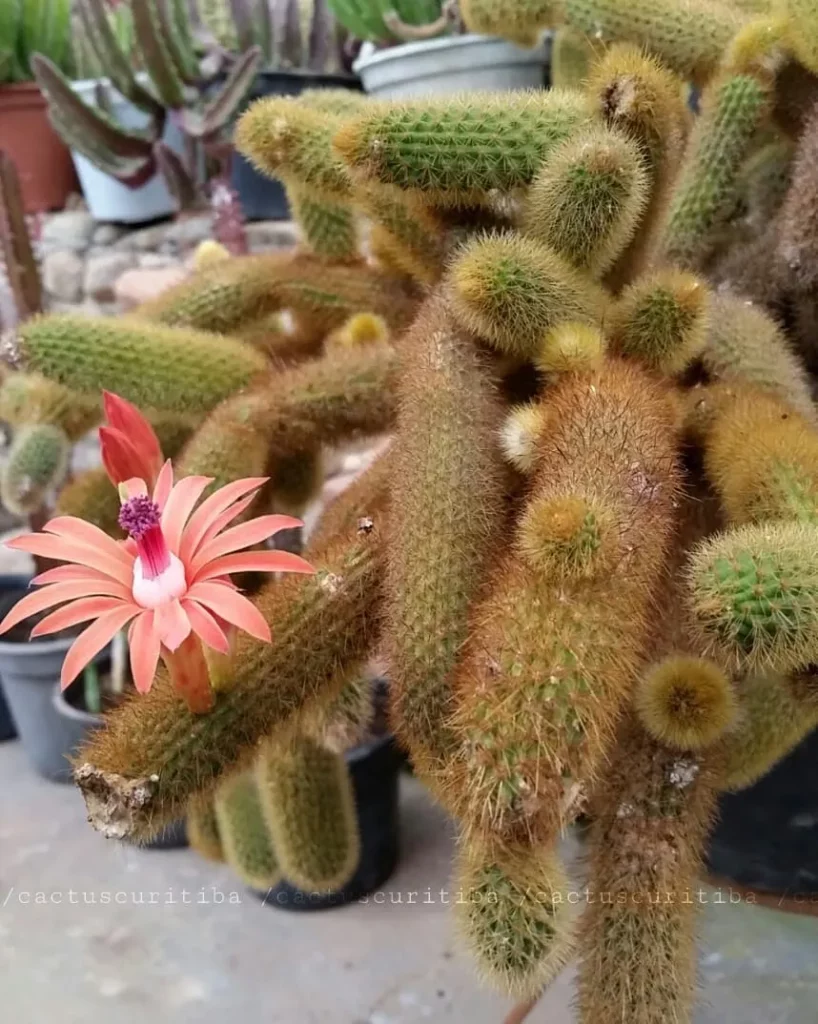
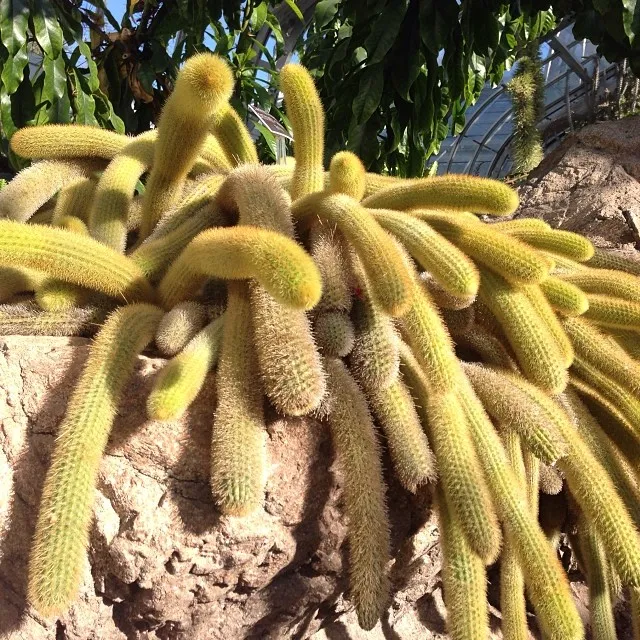
The Golden Rat Tail is a unique hanging cactus that exhibits a fast to medium growth rate, depending on the care and growing conditions it receives. With proper attention, this fascinating plant can reach a mature size of up to 10 inches tall, producing trailing or pendant stems measuring between 2 and 5 meters in length. By maintaining the ideal environment and providing adequate care, you can ensure the Golden Rat Tail develops more stems, resulting in a lush and full appearance. Regular pruning or trimming can also be employed to shape and direct the growth of this remarkable cactus.
Pests and Diseases of Golden Rat Tail
While growing the Golden Rat Tail is generally hassle-free, it is still susceptible to pests and diseases. It’s important to be aware of potential issues and take necessary steps to prevent or address them. Here are some common problems to watch out for:
1. Mealy Bugs
Mealy bugs are small, white, cottony insects that can infest the Golden Rat Tail. They feed on the sap of the plant, causing damage and weakening its overall health. To control mealy bugs, regularly inspect your plant for signs of infestation, such as the presence of white cottony masses or sticky residue. If you detect mealy bugs, treat them by gently wiping them off with a cotton swab dipped in rubbing alcohol.
2. Scale Insects
Scale insects are small, oval-shaped pests that attach themselves to the stems and leaves of the Golden Rat Tail. They can be identified by their hard, protective covering. These insects also feed on the plant’s sap, causing yellowing of leaves and stunted growth. To remove scale insects, gently scrape them off the plant using a soft brush or cloth. If the infestation is severe, you may need to use a horticultural oil or insecticidal soap.
3. Spider Mites
Spider mites are tiny pests that can be difficult to detect with the naked eye. They are most active in dry, warm conditions and may infest the Golden Rat Tail by feeding on the plant’s tissues. Spider mite infestations usually result in fine webbing and leaf discoloration. To control spider mites, increase humidity levels around the plant by misting it regularly. You can also use insecticidal soap or neem oil to rid the plant of these pests.
4. Fungal Attack
The Golden Rat Tail is susceptible to fungal attacks, especially if it is overwatered or exposed to excessive moisture. Fungal diseases can cause rotting of roots, stems, or even the entire plant. To prevent fungal attack, ensure that the plant is potted in well-draining soil and the pot has adequate drainage holes. Avoid overwatering and allow the soil to dry out between waterings. If you notice any signs of fungal infection, such as brown or black spots, remove the infected parts and improve the plant’s growing conditions.
Winter Care for Golden Rat Tail
When it comes to winter care for your Golden Rat Tail, you’ll find it relatively simple to keep this stunning cactus thriving. With the right approach, you can ensure its health and abundant flower production during the colder months.
The Golden Rat Tail is a hardy plant that can tolerate temperatures ranging from 5 to 15 degrees Celsius. It’s also frost-resistant to -2 degrees Celsius for short periods, as long as the soil is dry. However, it’s best to provide some protection from frost to prevent any potential damage.
During winter, the Golden Rat Tail enters a cool rest period, which actually enhances its flower production when spring arrives. To create the ideal environment, keep the plant in a cool area with plenty of natural light. A north-facing window is often a good spot.
During this rest period, it’s important to adjust your watering schedule. Reduce watering significantly and allow the soil to dry out between waterings. The Golden Rat Tail is a drought-tolerant plant and will appreciate a drier environment during winter.
To summarize, here are some key points for winter care:
- Protect the plant from frost if temperatures drop below -2 degrees Celsius.
- Keep the Golden Rat Tail in a cool, well-lit area, preferably near a north-facing window.
- Reduce watering significantly and allow the soil to dry out between waterings to mimic its natural cool rest period.
Golden Rat Tail: A Striking Addition to Any Space
The Golden Rat Tail, with its unique appearance and easy care requirements, is a striking addition to any indoor or outdoor space. Whether you choose to grow it in a hanging basket or pot, this cactus brings a touch of wilderness and beauty to its surroundings.
With its long, coiled stems covered in golden spines and vibrant orange or coral pink flowers, the Golden Rat Tail becomes an eye-catching focal point in any setting. Its trailing growth habit adds a dynamic element to your decor, creating a visually stunning display.
Providing the right light conditions, proper watering schedule, and occasional fertilization will ensure that your Golden Rat Tail thrives and remains captivating for years to come. This cactus prefers bright, filtered light and can tolerate partial sun or light shade. It is drought-tolerant, so be sure to water it moderately and allow the soil to dry out completely between waterings. Occasional fertilization during the active growing period will promote healthy growth and abundant blooms.
FAQ
What is the appearance of the Golden Rat Tail?
The Golden Rat Tail is a unique hanging cactus with long, coiled stems covered in attractive golden spines. The stems hang down, giving it a trailing or pendant growth habit. It can grow up to 2 to 5 meters in length and produces vibrant orange or salmon-pink flowers.
What are the light requirements for the Golden Rat Tail?
The Golden Rat Tail requires bright, filtered light. It thrives in partial sun or light shade but should not be placed in full sun as it can cause sunburn. Indoors, place the plant near a window where it can receive bright, indirect light for several hours a day. Outdoors, choose a location that provides filtered light or partial sun.
How should I water the Golden Rat Tail?
The Golden Rat Tail is a drought-tolerant cactus that requires moderate watering. Water the plant thoroughly when the soil becomes dry, but allow it to dry out completely between waterings. During the summer months, you may need to water more frequently. However, be cautious not to overwater, as this can lead to root rot. In winter, reduce watering significantly as the plant enters a period of rest.
How should I fertilize the Golden Rat Tail?
To promote healthy growth and blooming, the Golden Rat Tail can benefit from occasional fertilization. Use a high potassium liquid feed during the active growing period, typically in spring and summer. However, be cautious not to over-fertilize, as this can harm the plant. Always follow the instructions on the fertilizer packaging and apply it at the recommended frequency.
How should I pot the Golden Rat Tail?
The Golden Rat Tail should be potted in a well-drained cactus mix to ensure proper root health. Repotting should be done every other year or when the plant outgrows its current pot. When repotting, provide fresh potting mix and ensure that it drains well. This will help prevent issues such as root rot and provide a healthy environment for the plant to thrive.
How can I propagate the Golden Rat Tail?
The Golden Rat Tail can be propagated through cuttings or seeds. For cuttings, take them in spring or summer and allow the ends to callous before replanting them in fresh cactus soil that is slightly moist. Another method is propagation through seeds. Surface sow the seeds and keep them in a warm, well-lit area. Be mindful that seedlings dislike strong light and dry conditions.
What is the growth and development rate of the Golden Rat Tail?
The Golden Rat Tail has a fast to medium growth rate, depending on the conditions and care provided. It can reach a maturity size of 10 inches tall, with trailing or pendant stems measuring 2 to 5 meters in length. Regular pruning or trimming can help shape the plant and direct its growth.
How can I prevent pests and diseases in the Golden Rat Tail?
Common pests of the Golden Rat Tail include mealy bugs, scale insects, and spider mites. Regularly inspect the plant for signs of infestation and take prompt action if detected. Additionally, be cautious of fungal attacks, which can occur if the plant is overwatered or exposed to excessive moisture. Providing proper care and maintaining a pest-free environment will help ensure the plant’s health.
How should I care for the Golden Rat Tail during winter?
The Golden Rat Tail can tolerate temperatures ranging from 5 to 15 degrees Celsius and is frost hardy to -2 degrees Celsius for short periods if the soil is dry. During winter, keep the plant in a cool, well-lit area. Reduce watering significantly and allow the soil to dry out between waterings. Providing adequate light and maintaining a cool, dry environment will help the plant thrive during the winter months.
What makes the Golden Rat Tail a striking addition to any space?
The Golden Rat Tail has a unique appearance with its long, coiled stems covered in golden spines and vibrant orange or coral pink flowers. It adds a touch of wilderness and beauty to any indoor or outdoor space. By providing the right care, you can enjoy the beauty of the Golden Rat Tail for years to come.

